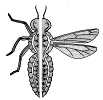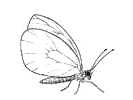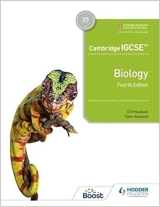Insect Structure and Function

For illustrations to accompany this article see Insect Structure and Function |
The arthropods are a large group of invertebrate animals which include insects, spiders, millipedes, centipedes and crustacea such as lobsters and crabs. All arthropods have a hard exoskeleton or cuticle, segmented bodies and jointed legs. The crustacea and insects also have antennae, compound eyes and, often, three distinct regions to their bodies: head, thorax and abdomen.
General Characteristics of Insects
The insects differ from the rest of the arthropods in having only three pairs of jointed legs on the thorax and, typically, two pairs of wings. There are a great many different species of insects and some, during evolution, have lost one pair of wings, as in the houseflies, crane flies and mosquitoes. Other parasitic species like the fleas have lost both pairs of wings. In beetles, grasshoppers and cockroaches, the first pair of wings has become modified to form a hard outer covering over the second pair.
Cuticle and ecdysis. The value of the external cuticle is thought to lie mainly in reducing the loss from the body of water vapour through evaporation, but it also protects the animal from damage and bacterial invasion, maintains its shape and allows rapid locomotion. The cuticle imposes certain limitations in size, however, for if arthropods were to exceed the size of some of the larger crabs, the cuticle would become too heavy for the muscles to move the limbs.
Between the segments of the body and at the joints of the limbs and other appendages, the cuticle is flexible and allows movement. For the most part, however, the cuticle is rigid and prevents any increase in the size of the insect except during certain periods of its development when the insect sheds its cuticle (ecdysis) and increases its volume before the new cuticle has time to harden. Only the outermost layer of the cuticle is shed, the inner layers are digested by enzymes secreted from the epidermis and the fluid so produced is absorbed back into the body. Muscular contractions force the blood into the thorax, causing it to swell and so split the old cuticle along a predetermined line of weakness. The swallowing of air often accompanies ecdysis; assisting the splitting of the cuticle and keeping the body expanded while the new cuticle hardens. In insects, this moulting, or ecdysis, takes place only in the larval and pupal form and not in adults. In other words, mature insects do not grow.
Breathing. Running through the bodies of all insects is a branching system of tubes, tracheae which contain air. They open to the outside by pores called spiracles and they conduct air from the atmosphere to all living regions of the body The tracheae are lined with cuticle which is thickened in spiral bands This thickening keeps the tracheae open against the internal pressure of body fluids. The spiracles, typically, open on the flanks of each segment of the body, but in some insects there are only one or two openings. The entrance to the spiracle is usually supplied with muscles which control its opening or closure. Since the spiracles are one of the few areas of the body from which evaporation of water can occur, the closure of the spiracles when the insect is not active and therefore needs less oxygen, helps to conserve moisture. The tracheae branch repeatedly until they terminate in very fine tracheoles which invest or penetrate the tissues and organs inside the body. The walls of tracheae and tracheoles are permeable to gases, and oxygen is able to diffuse through them to reach the living cells. As might be expected the supply of tracheoles is most dense in the region of very active muscle, e.g. the flight muscles in the thorax.
The movement of oxygen from the atmosphere, through the spiracles, up the tracheae and tracheoles to the tissues, and the passage of carbon dioxide in the opposite direction, can be accounted for by simple diffusion but in active adult insects there is often a ventilation process which exchanges up to 60 per cent of the air in the tracheal system. In many beetles, locusts, grasshoppers and cockroaches, the abdomen is slightly compressed vertically (dorso-ventrally) by contraction of internal muscles. In bees and wasps the abdomen is compressed rhythmically along its length, slightly telescoping the segments. In both cases, the consequent rise of blood pressure in the body cavity compresses the tracheae along their length (like a concertina) and expels air from them. When the muscles relax, the abdomen springs back into shape, the tracheae expand and draw in air. Thus, unlike mammals, the positive muscular action in breathing is that which results in expiration.
This tracheal respiratory system is very different from the respiratory systems of the vertebrates, in which oxygen is absorbed by gills or lungs and conveyed in the blood stream to the tissues. In the insects, the oxygen diffuses through the trachea and tracheoles directly to the organ concerned. The carbon dioxide escapes through the same path although a proportion may diffuse from the body surface.
Blood system. The tracheal supply carrying oxygen to the organs gives the circulatory system a rather different role in insects from that in vertebrates. Except where the tracheoles terminate at some distance from a cell, the blood has little need to carry dissolved oxygen and, with a few exceptions, it contains no haemoglobin or cells corresponding to red blood cells. There is a single dorsal vessel which propels blood forward and releases it into the body cavity, thus maintaining a sluggish circulation. Apart from this vessel, the blood is not confined in blood vessels but occupies the free space between the cuticle and the organs in the body cavity. The blood therefore serves mainly to distribute digested food, collect excretory products and, in addition, has important hydraulic functions in expanding certain regions of the body to split the old cuticle and in pumping up the crumpled wings of the newly emerged adult insect.
Sensory system
Touch. From the body surface of the insect there arises a profusion of fine bristles most of which have a sensory function, responding principally to touch, vibration, or chemicals. The tactile (touch-sensitive) bristles are jointed at their bases and when a bristle is displaced to one side, it stimulates a sensory cell which fires impulses to the central nervous system.
The tactile bristles are numerous on the tarsal segments, the head, wing margins, or antennae according to the species and as well as informing the insect about contact stimuli, they probably respond to air currents and vibrations in the ground or in the air.
Proprioceptors. Small oval or circular areas of cuticle are differentially thickened and supplied with sensory fibres. They probably respond to distortions in the cuticle resulting from pressure, and so feed back information to the central nervous system about the position of the limbs. Organs of this kind respond to deflections of the antennae during flight and are thought to "measure" the air speed and help to adjust the wing movements accordingly. In some insects there are stretch receptors associated with muscle fibres, apparently similar to those in vertebrates.
Sound. The tactile bristles on the cuticle and on the antennae respond to low-frequency vibrations but many insects have more specialized sound detectors in the form of a thin area of cuticle overlying a distended trachea or air sac and invested with sensory fibres. Such tympanal organs appear on the thorax or abdomen or tibia according to species and are sensitive to sounds of high frequency. They can be used to locate the source of sounds as in the case of the male cricket "homing" on the sound of the female's "chirp", and in some cases can distinguish between sounds of different frequency.
Smell and taste. Experiments show that different insects can distinguish between chemicals which we describe as sweet, sour, salt and bitter, and in some cases more specific substances. The organs of taste are most abundant on the mouthparts, in the mouth, and on the tarsal segments but the nature of the sense organs concerned is not always clear.
Smell is principally the function of the antennae. Here there are bristles, pegs or plates with a very thin cuticle and fine perforations through which project nerve endings sensitive to chemicals. Sometimes these sense organs are grouped together and sunk into olfactory pits. In certain moths the sense of smell is very highly developed. The male Emperor moth will fly to an unmated female from a distance of a mile, attracted by the "scent" which she exudes. A male moth's antennae may carry many thousand chemo-receptors.
Sight. The compound eyes of insects consist of thousands of identical units called ommatidia packed closely together on each side of the head. Each ommatidium consists of a lens system formed partly from a thickening of the transparent cuticle and partly from a special crystalline cone. This lens system concentrates light from within a cone of 20°, on to a transparent rod, the rhabdom. The light, passing down this rhabdom, stimulates the eight or so retinal cells grouped round it to fire nervous impulses to the brain. Each ommatidium can therefore record the presence or absence of light, its intensity, in some cases its colour and, according to the position of the ommatidium in the compound eye, its direction. Although there may be from 2000 to 10,000 or more ommatidia in the compound eye of an actively flying insect, this number cannot reconstruct a very accurate picture of the outside world. Nevertheless, the "mosaic image" so formed, probably produces a crude impression of the form of well-defined objects enabling bees, for example, to seek out flowers and to use landmarks for finding their way to and from the hive. It is likely that the construction of compound eyes makes them particularly sensitive to moving objects, e.g. bees are more readily attracted to flowers which are being blown by the wind.
Flower-visiting insects, at least, can distinguish certain colours from shades of grey of equal brightness. Bees are particularly sensitive to blue, violet and ultra-violet but cannot distinguish red and green from black and grey unless the flower petals are reflecting ultra-violet light as well. Some butterflies can distinguish yellow, green and red. The simple eyes of, for example, caterpillars, consist of a cuticular lens with a group of light-sensitive cells beneath, rather like a single ommatidium. They show some colour sensitivity and, when grouped together, some ability to discriminate form. The ocelli which occur in the heads of many flying insects probably respond only to changes in light intensity.
Locomotion
Movement in insects depends, as it does in vertebrates, on muscles contracting and pulling on jointed limbs or other appendages. The muscles are within the body and limbs, however, and are attached to the inside of the cuticle. A pair of antagonistic muscles is attached across a joint in a way which could bend and straighten the limb. Many of the joints in the -insect are of the "peg and socket" type. They permit movement in one plane only, like a hinge joint, but since there are several such joints in a limb, each operating in a different direction, the limb as a whole can describe fairly free directional movement.
Walking. The characteristic walking pattern of an insect involves moving three legs at a time. The body is supported by a "tripod" of three legs while the other three are swinging forward to a new position. On the last tarsal joint are claws and, depending on the species, adhesive pads which enable the insect to climb very smooth surfaces. The precise mechanism of adhesion is uncertain. Modification of the limbs and their musculature enables insects to leap, e.g. grasshopper, or swim, e.g. water beetles.
Flying. In insects with relatively light bodies and large wings such as butterflies and dragonflies, the wing muscles in the thorax pull directly on the wing where it is articulated to the thorax, levering it up and down. Insects such as bees, wasps and flies, with compact bodies and a smaller wing area have indirect flight muscles which elevate and depress the wings very rapidly by pulling on the walls of the thorax and changing its shape. In both cases there are direct flight muscles which, by acting on the wing insertion, can alter its angle in the air. During the downstroke the wing is held horizontally, so thrusting downwards on the air and producing a lifting force. During the upstroke the wing is rotated vertically and offers little resistance during its upward movement through the air.
Feeding methods
It is not possible to make very useful generalizations about the feeding methods of insects because they are so varied. However, insects do have in common three pairs of appendages called mouth parts, hinged to the head below the mouth and these extract or manipulate food in one way or another. The basic pattern of these mouth parts is the same in most insects but in the course of evolution they have become modified and adapted to exploit different kinds of food source. The least modified are probably those of insects such as caterpillars, grasshoppers, locusts and cockroaches in which the first pair of appendages, mandibles, form sturdy jaws, working sideways across the mouth and cutting off pieces of vegetation which are manipulated into the mouth by the other mouth parts, the maxillae and labium.
Aphids are small insects (e.g. greenfly) which feed on plant juices that they suck from leaves and stems. Their mouthparts are greatly elongated to form a piercing and sucking proboscis. The maxillae fit together to form a tube which can be pushed into plant tissues to reach the food-conducting vessels of the phloem and so extract nutrients.
The mosquito has mandibles and maxillae in the form of slender, sharp stylets which can cut through the skin of a mammal as well as penetrating plant tissues. To obtain a blood meal the mosquito inserts its mouth parts through the skin to reach a capillary and then sucks blood through a tube formed from the labrum or "front lip" which precedes the mouth parts.
Another tubular structure, the hypopharynx, serves to inject into the wound a substance which prevents the blood from clotting and so blocking the tubular labrum. In both aphid and mosquito the labium is rolled round the other mouth parts, enclosing them in a sheath when they are not being used.
In the butterfly, only the maxillae contribute to the feeding apparatus. The maxillae are greatly elongated and in the form of half tubes, i.e. like a drinking straw split down its length. They can be fitted together to form a tube through which nectar is sucked from the flowers.
The housefly also sucks liquid but its mouthparts cannot penetrate tissue. Instead the labium is enlarged to form a proboscis which terminates in two pads whose surface is channelled by grooves called pseudotracheae. The fly applies its proboscis to the food and pumps saliva along the channels and over the food. The saliva dissolves soluble parts of the food and may contain enzymes which digest some of the insoluble matter. The nutrient liquid is then drawn back along the pseudotracheae and pumped into the alimentary canal.
For illustrations to accompany this article see Insect Structure and Function
| Search this site |
| Search the web |
© Copyright D G Mackean & Ian Mackean. All rights reserved.


